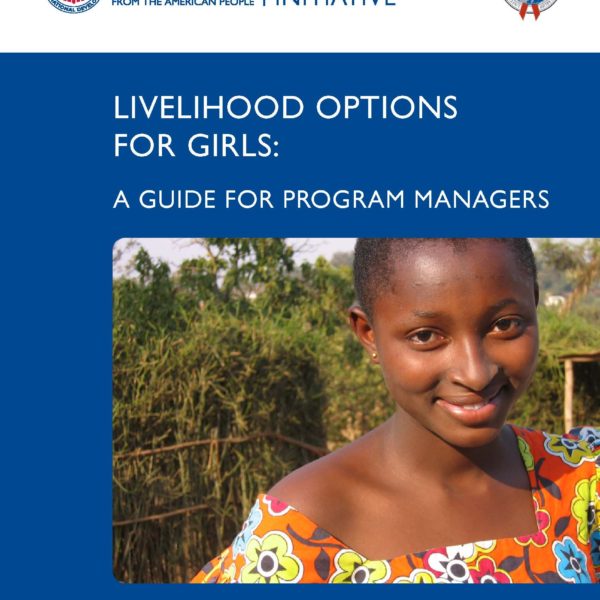The guide reflects lessons learned from a literature review the USAID | Health Policy Initiative, Task Order 1 conducted last year. The review revealed a variety of gender-related factors that contribute to the economic and social vulnerabilities of different subpopulations of adolescents and put them at increased risk of HIV infection. Although many programs respond to the needs of different groups of adolescents, there is no single source of information on the factors contributing to adolescents’ increased HIV risk or to livelihood programs designed to address adolescents’ economic vulnerabilities. Following a presentation of gender terms and defi nitions, this guide describes what is known about economic vulnerability and HIV risk for adolescent girls, as well as gaps in our current knowledge. It then presents a menu of programming options that address the particular constraints faced by varying subpopulations of adolescent girls within the context of gender-based constraints and economic vulnerability. For example, the programmatic responses needed by young married girls may be quite different from those needed by rural, married out-of-school girls or urban girls who are unmarried and in school. Similarly, young, urban out-of-school girls who work as domestic servants may face constraints different from those of young girls in rural areas who also are out of school but provide domestic labor in their own homes. All of these groups face different gender-based constraints and opportunities
Further Reading
Publication
Empowerment in agricultural value chains: Mixed methods evidence from the Philippines
April 28, 2020
Publication
Building an Inclusive Agriculture: Strengthening Gender Equality in Agricultural Value Chains
November 11, 2019
Cultural Practice, LLC
4300 Montgomery Ave., Suite 305
Bethesda, Maryland 20814
(tel.) 301-654-1787
(fax) 301-654-1789

